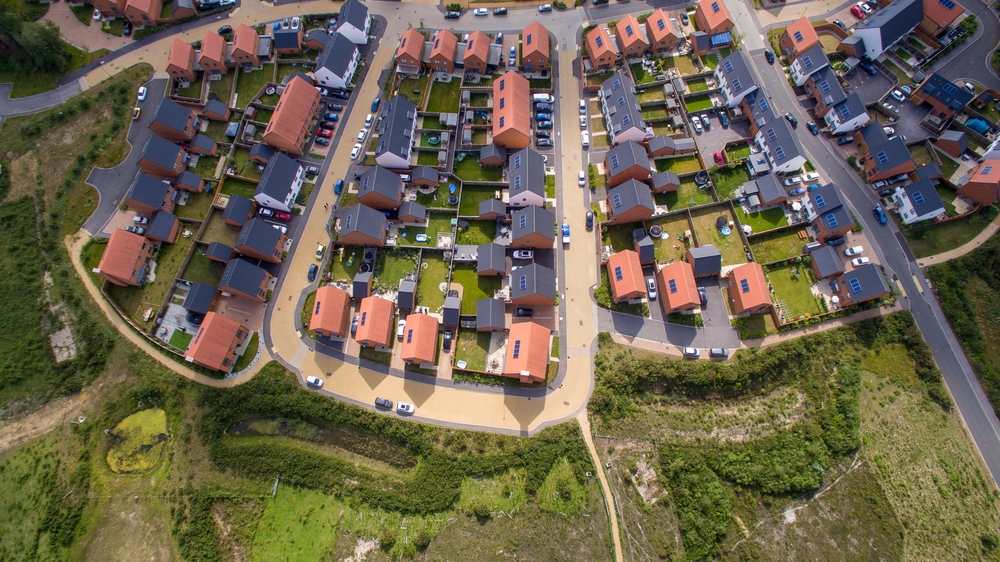

Our monthly property market review is intended to provide background to recent developments in property markets as well as to give an indication of how some key issues could impact in the future.
We are not responsible or authorised to provide advice on investment decisions concerning property, only for the provision of mortgage advice.
The latest statistics from Savills offer an insight into the City investment market.
In July, the market recorded £197.6m of transactions across six deals. One of these marked the seventh deal over £100m in 2025, already beating 2024’s total of four large transactions across the whole year, suggesting renewed investor appetite for larger lot sizes.
Between January and July, total turnover in the City investment market reached £2bn across 42 transactions, which is 33% lower than the five-year average. However, the average deal size is currently £47.6m, significantly higher than the average of £23.6m recorded this time last year.
At the end of July, there was £2.05bn of commercial property under offer across 41 transactions. There is £1.9bn of stock currently available, with more expected to come on the market in September following the usual summer holiday slowdown. Meanwhile, the Savills City prime yield remains at 5.25% for the twenty-fourth consecutive month.
The UK commercial property market had a subdued start to the year, but the outlook for H2 is stronger.
According to CBRE, investment volumes in the first half of 2025 were down 18% when compared with H1 2024. Figures from Savills supported this, with overall volumes 7% lower than the long-term H1 average. The slowdown is likely due to widespread economic and geopolitical uncertainty, including inflation, trade tariffs and global conflict. As a result of these ongoing concerns, investors are generally concentrating on the office and industrial sectors, with limited activity outside of these areas. Office yields are at attractive levels considering interest rate levels, which are helping to attract investors.
Market experts anticipate that the second half of the year will be a little brighter for commercial property. Expectations of further cuts to Bank Rate should boost investor confidence, along with improved credit conditions and some anticipated economic clarity.
Shutterstock/stocker1970
A report from Arcadis has found that the London new build pipeline contracted by nearly 30% in Q2, despite some big infrastructure orders at the start of the year.
According to the latest London Office Crane Survey, construction activity in the capital hit the lowest level since summer 2022, with 2.4 million sq. ft. added to the pipeline in the six months to the end of March.
There are some signs that the construction pipeline is regaining momentum, albeit slowly. Public non-housing output increased by 16% year-on-year in Q2, driven by government-backed health, research and infrastructure projects. As this sector only accounts for 10% of new build work it is not enough to drive recovery on its own.
Simon Rawlinson at Arcadis said, “Economic headwinds and the complexity of delivering major programmes continue to hold back recovery. But for those willing to invest now, opportunities remain.”
According to Savills, housing market performance for the rest of the year is dependent on the Autumn Budget, with many speculating that the Chancellor will announce changes to Stamp Duty and Capital Gains Tax.
This uncertainty may slow down market activity up to 26 November, as buyers and sellers wait to see what Rachel Reeves has in store. Sensible pricing will therefore be essential for those looking to secure a sale over the coming months.
Moneyfacts reported in mid-August that the average five-year fixed rate mortgage fell below 5% for the first time since May 2023. However, the yield on 30-year UK government bonds hit a 27-year high in September, bringing concerns that mortgage rates will go up again.
Meanwhile, rental growth was 2.4% in August according to Zoopla, the lowest annual rate in four years and less than half that recorded in August 2024.
Rightmove has identified the most in-demand areas amongst homebuyers in London.
A map highlighting the most desirable areas in the capital has caused a stir online – shaped like a banana, the curve runs from South West to North East London. However, Rightmove’s research has shown that eight out of the ten buyer hotspots are not actually inside this area. Docklands and Hackney are the most in demand, both outside of the banana zone. Islington and Battersea were the only neighbourhoods that fell within the curve.
Property expert at Rightmove, Colleen Babcock commented, “Affordability is a key driver, with many of the most in-demand locations offering better value than the London average. It’s a reminder that buyer interest doesn’t always follow the trend, it follows the opportunity.”
All details are correct at the time of writing (17 September 2025)
Source: The Land Registry | Release date: 17/09/25 | Next data release: 22/10/25
By clicking this link you are departing from the regulated site of Ablestoke Financial Planning LLP.
Neither Ablestoke Financial Planning LLP nor Quilter Financial Planning accept responsibility for the accuracy of the information contained with this site.
Open Link